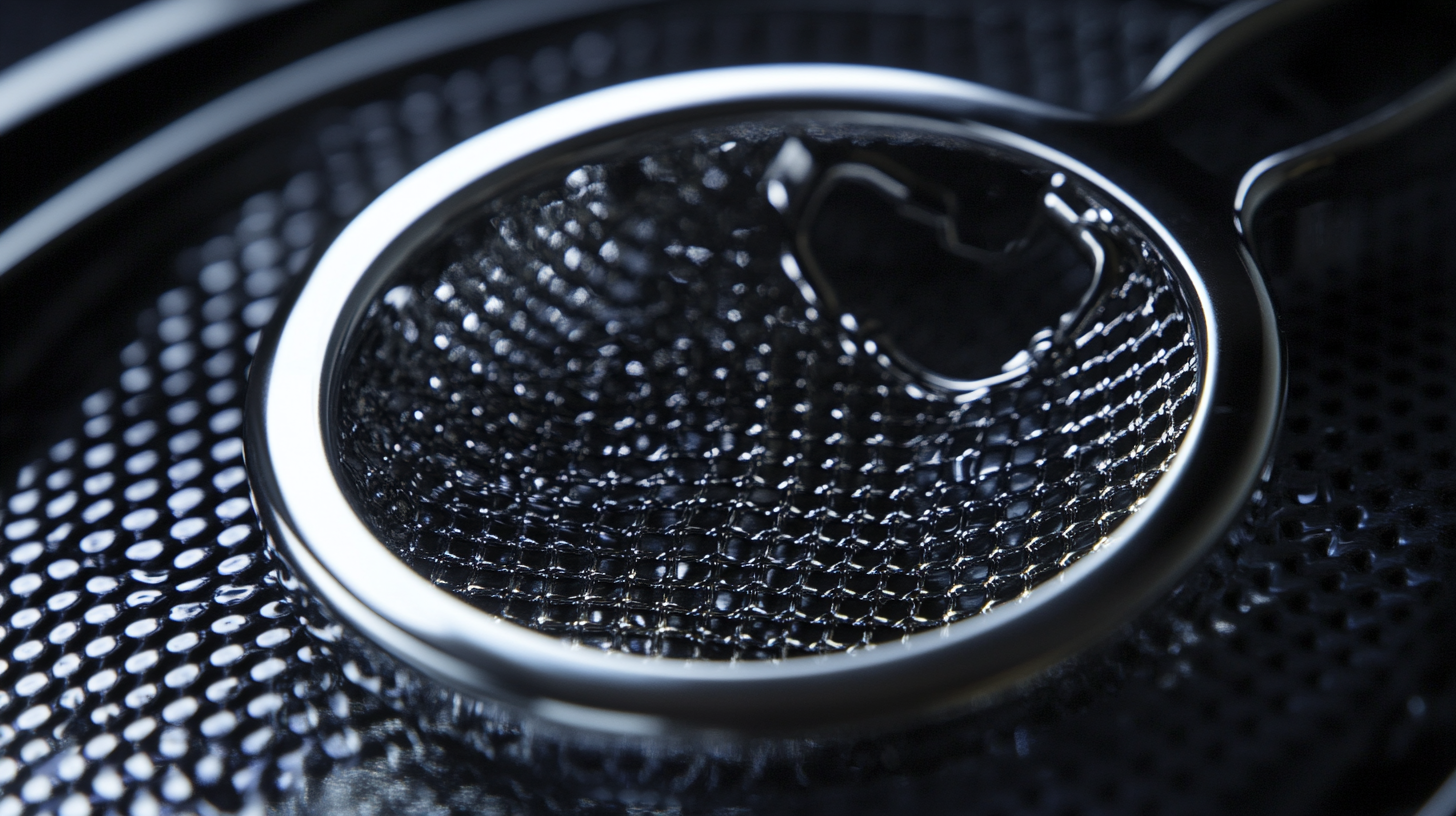Welcome to this website!

In the ever-evolving world of kitchen gadgets, the Collapsible Strainer has emerged as an essential tool for both home cooks and professional chefs alike. Its compact design and adaptability make it a popular choice for those seeking efficient ways to manage food preparation and cleanup. However, not all collapsible strainers are created equal, and understanding the industry standards that define their performance is crucial for making an informed purchase. In this blog, we will delve into five key industry standards that characterize the best collapsible strainers, highlighting important technical specifications such as material robustness, drainage efficiency, stability, ease of use, and cleaning convenience. By exploring these standards, you will be equipped to choose a collapsible strainer that not only meets your culinary needs but also enhances your overall cooking experience.

When it comes to collapsible strainers, the choice of materials can significantly impact their durability and performance. High-quality collapsible strainers are generally made from materials such as silicone, nylon, and stainless steel. According to a report by Grand View Research, the global market for strainers and filters is expected to reach USD 4.5 billion by 2027, underscoring the importance of material selection in this competitive landscape. Silicone, known for its flexibility and resistance to high temperatures, is increasingly favored for collapsible designs, enabling users to easily store and clean the product without compromising performance.
Nylon is another prevalent material, recognized for its strength and lightweight properties. A study published in the Journal of Food Engineering highlights that nylon strainers can sustain heavy loads and resist wear over time, making them ideal for both residential and industrial applications. Moreover, stainless steel provides superior corrosion resistance and longevity, critical for applications where hygiene and durability are paramount. With these materials at the forefront, manufacturers strive to develop strainers that not only meet industry standards but also offer consumers enhanced usability and effectiveness.

When selecting the best collapsible strainer, understanding the capacity and size is crucial for optimal performance in the kitchen. Industry recommendations suggest that a good strainer should have a capacity that accommodates various portions without compromising on efficiency. For instance, a strainer that can handle at least 4 quarts of liquids is typically ideal for most cooking tasks, ensuring it can effectively meet daily cooking demands while retaining the quality of the strained ingredients.
Furthermore, the design of the strainer matters as well. Many modern strainers are designed to be both space-efficient and functional, making them a perfect addition to contemporary kitchens. A strainer that collapses to a compact size while also offering a wide opening can make food preparation easier. Recent tests show that strainers with a diameter of at least 10 inches provide the best balance between capacity and ease of use, allowing for a comfortable pouring experience without spills. As the demand for multifunctional kitchen tools grows, it's essential to choose a collapsible strainer that not only saves space but also enhances culinary tasks efficiently.
When it comes to selecting the best collapsible strainer, understanding essential design features is crucial for ensuring efficiency and optimal performance in the kitchen. One critical aspect is the material used in construction. Look for strainers made from high-quality, food-grade silicone or stainless steel that can withstand high temperatures and resist staining. This not only guarantees durability but also maintains hygiene, as these materials are less likely to harbor bacteria.
Another vital feature is the design of the drainage holes. Smaller holes can prevent food particles from slipping through while allowing for quick drainage of liquids. Ensure that the holes are strategically placed and sized to maximize both functionality and ease of cleaning. Additionally, a wide base can add stability, preventing the strainer from collapsing or tipping over, which is a common issue with cheaper models.
**Tip:** Always check the collapsible mechanism. It should be smooth and easy to use, allowing for quick setup and breakdown. A well-designed collapsible feature enhances storage convenience without compromising the strainer's strength. Another tip is to choose a strainer that can handle various food types, so you get the maximum utility from your investment.
This chart illustrates the performance ratings of various essential design features for collapsible strainers. The ratings are based on material quality, mesh size, weight capacity, ease of storage, and durability, indicating their impact on overall performance.
When it comes to collapsible strainers, the impact of manufacturing processes on durability cannot be overstated. Quality control standards play a pivotal role in ensuring that these products withstand the test of time. For example, rigorous testing during production can identify potential weaknesses early, allowing manufacturers to refine designs and materials. This proactive approach contributes to the longevity and efficiency of strainers, which are essential in various culinary and industrial applications.
**Tip:** Always choose strainers that mention compliance with industry quality standards. Look for certifications that demonstrate their resilience under pressure, particularly if they will be used frequently.
The materials used in manufacturing directly affect the performance of collapsible strainers. High-quality plastics and stainless steel are preferred for their durability and resistance to corrosion. A strainer designed with reinforced joints and non-slip grips will also enhance usability, resulting in a product that not only lasts longer but performs better under demanding conditions.
**Tip:** Inspect the product specifications for details on the materials used. Prioritizing strainers made from durable substances can prevent premature wear and ensure you get the best value for your investment.

As the global awareness of environmental issues rises, the demand for eco-friendly collapsible strainers is surging. Consumers are increasingly seeking products that not only serve practical purposes but also align with sustainable living practices. This trend reflects a broader shift towards greener consumer choices, prompting manufacturers to innovate and produce strainers using biodegradable materials and reducing plastic waste. Companies that prioritize sustainability not only attract eco-conscious customers but also contribute positively to the environment.
When selecting a collapsible strainer, consider opting for those made from materials like silicone or stainless steel that are both durable and recyclable. This not only enhances the lifespan of the product but also ensures that it can be disposed of responsibly at the end of its life cycle. Additionally, look for strainers that are compact and multifunctional, as they save space and reduce the need for multiple kitchen tools.
To further enhance your eco-friendly kitchen, always aim for products that come with minimal, recyclable packaging. Supporting brands that emphasize sustainability in their production process adds to the overall impact of your choices, helping to drive the market towards a greener future. Remember, every small step counts in our journey towards environmental consciousness.
| Standard | Description | Material | Eco-Friendly Rating | Market Demand Trend |
|---|---|---|---|---|
| ASTM F1346 | Standard for filter mesh size and structural integrity | Silicone & BPA-free Plastic | High | Growing |
| ISO 14001 | Environmental management standards for production | Recycled materials | Very High | Increasing |
| FDA Compliance | Food safety standards for materials used | Food-grade silicone | High | Stable |
| CEN/TS 16216 | Technical Specification for collapsible strainers | Biodegradable Plastics | Moderate | Emerging |
| CE Marking | Safety and environmental standards for products sold in the EU | Mixed Media | High | Consistent |
